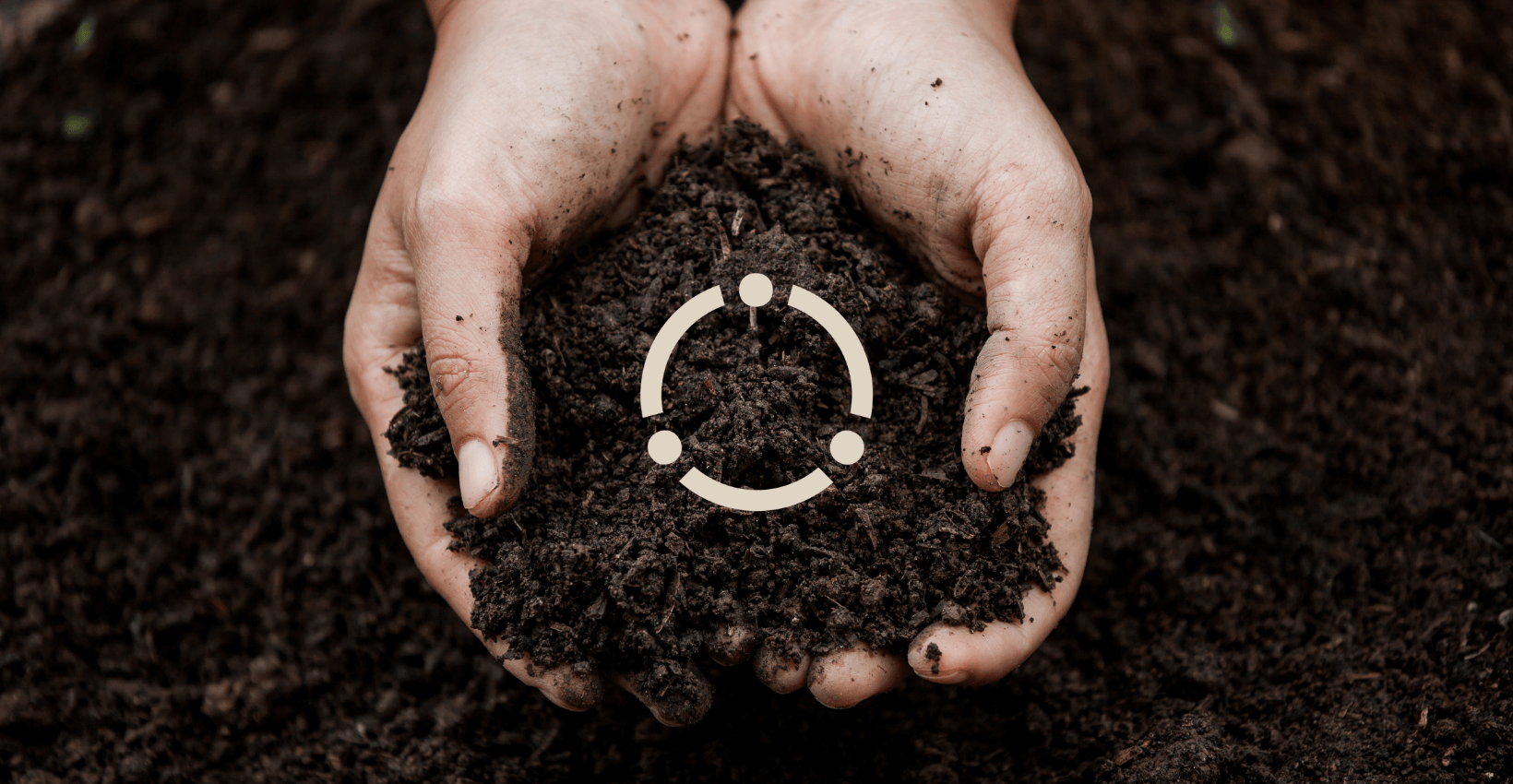Have you ever wondered what composting is, or what the difference between a “biodegradable” and “compostable” product is? Why is composting valuable? Where does Erthos fit into all of this?
There’s no doubt, composting is complicated, but it’s an important part of transforming the zero-waste landscape; so let’s break it down.
What is Composting?
Composting is the process of breaking down organic material (ex: natural materials like plants & food scraps), and turning it into nutrient-rich fertilizer that’s used to enrich soils, and the plants that grow in them. All organic materials will break down eventually, but composting speeds the process along by providing ideal conditions for microorganisms (ex: healthy bacteria and fungi), to complete the breakdown. A twig on the forest floor may break down over many years, but composting conditions can help break it down over the span of months.

The Importance of Composting
Compost itself is a super nutritious fertilizer that’s used to nourish soils, but the process of composting provides even more benefits than that. Composting acts as a pathway to keep organic materials out of landfills. When those materials end up in landfill, they don’t have the right conditions to break down. Instead, they stick around, taking up huge amounts of land, releasing methane in the process. Methane is a greenhouse gas, acting like a blanket to trap heat in the Earth’s atmosphere; but it has a 25 times greater global warming impact compared to CO2.
Globally, at least 40% of plastics (over 31 million tonnes) are landfilled each year; if even a portion of that could be transformed into a plant powered alternative, which is captured and composted, imagine the amount of pollution and emissions that would be mitigated! The more common composting is, the more plastic waste can be diverted from landfills, reducing pollution and methane emissions. That’s a big win for the planet.
What Makes a Material Compostable
You may have heard the term “biodegradable” before, but how is that different from composting? Biodegradable means that a material gets broken down by microorganisms into smaller pieces, or its basic building blocks. The trouble with biodegradation is that it attaches no claims of how long that breakdown takes. On the flip side, materials that are “compostable” can biodegrade under specific time and temperature conditions, along with other requirements, to produce only compost, CO2, water, salts, and minerals that are natural and safe. Think of it this way: a material that is compostable is also biodegradable, but a biodegradable material is not necessarily compostable.

Industrial vs. Home Compostable
There are several types of composting which can be done simply in your backyard, or in large scale facilities, to be processed under varying conditions (temperature, oxygen, pH, moisture levels, etc.). The key, however, is having controlled conditions.
When it comes to compostable plastics, there are two main categories of composting: “home” and “industrial”. Home composting is done at lower temperatures, and over 12 months, and is meant to represent a backyard garden compost pile. Industrial composting is done at higher temperatures (55-60 °C) for 6 months, and in large facilities, and may not always be compatible with home compost systems.

Erthos materials are designed to be both home and industrially compostable. We design materials to break down in conditions like those in a backyard compost heap, but make sure they can also fit into industrial facilities. This way, we can make sure that products made with Erthos resins fit into as many composting infrastructures as possible, to divert the highest amount of single use plastic waste from landfills.
How To Identify Compostables
How can you tell if compostable plastics are actually compostable? There are actually a host of certifications to ensure that manufacturers, brands, and consumers alike can be confident in a material’s compostability. Standards bodies like ASTM, ISO, and CEN set the standard for how a compostable material must behave in a compost setting, while independent certification bodies like BPI (USA) and TUV Austria work with brands and manufacturers to certify materials to those standards. They also enforce a standardized labelling system so that the consumer knows exactly what to do with their products, to make sure that compostables go where they’re supposed to.

Benefits of Composting + How Erthos Adds Value
Compostable plastics present an opportunity for us to rethink and reduce plastic waste to landfill, especially for materials which are more difficult to recycle or to service through reuse models. While gaps in the waste management infrastructure still exist for compostables, groups like the Biodegradable Products Institute are working diligently to advocate for policies and infrastructure changes to ensure that truly compostable solutions can become more accepted. The more conventional composting is, the more food and compostable plastic waste can be diverted from landfills. This reduces pollution and emissions from landfill, which is a big win for the planet.
As plastic consumption continues to grow, so does our waste; while recycling and reusing our materials is a great option for certain products, there is a large volume of single-use products which require us to rethink how we design for use & end-of-life. Just like a twig on the forest floor, we are designing materials to serve their function, then disappear without a trace when we’re done with them. Transitioning from unwanted plastic pollution to materials that work with the planet, compostables are a part of the future of sustainable materials.
Want to learn more about how Erthos is building better, compostable materials? Let’s chat.

0 Comments